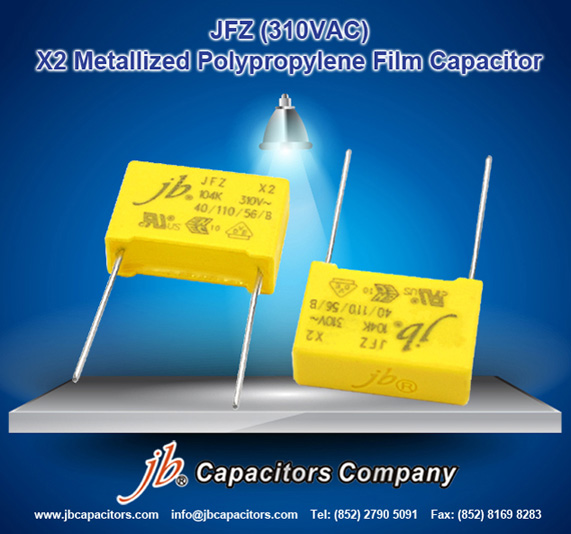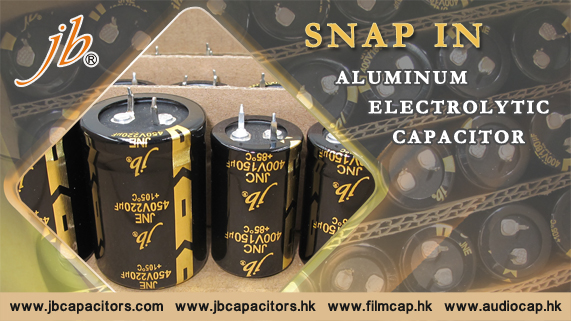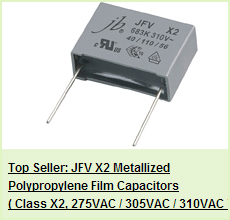2020-2-20 10:27:7
views
Do you have needs for below Snap in Aluminum electrolytic capacitors? We support very fast delivery time and very competitive price.
Our monthly output is about 1,000,000pcs, we produce top quality in China, never meet any quality problem.
Welcome your any inquiry list for check our prices.
JNC - 2000H at 85°C, Snap in Aluminum Electrolytic Capacitor, for Speaker Network
JNE - 2000H at 105°C, Miniaturized, Snap in Aluminum Electrolytic Capacitor
JNG - 5000H at 85°C, Snap in Aluminum Electrolytic Capacitor, Miniaturized Size, Long Life
JNJ - 3000H at 105°C, Miniaturized, Long Life Snap in Aluminum Electrolytic Capacitor
JNK - 5000H at 105°C Snap in Aluminum Electrolytic Capacitor
2015-4-16 23:46:30
views
Do you know what is the best seller in jb Capacitor Company? You will say plastic film capacitors, right? Yes, you are definitely right.
But the most strong series in our plastic film capacitors is Class X2 Film Capacitor JFV.
In year 2015, we will launch a new series that is the sister series with JFV, we call it JFZ. Both of them are produced by jb Capacitor Company.
Both of them get individual UL, cUL, VDE, ENEC approval.
Class X2 JFV UL file Number : E344970 , ENEC-VDE file Number : 40035534
Class X2 JFZ UL file Number : E344970, ENEC-VDE file Number : 40041888
But In some regards, JFZ is a upgraded level compared with JFV.
JFV Passive flammability category is Class C, JFZ Passive flammability category is Class B.
However, in order to give best support to customers, our JFZ price even can compete with JFV.
Below is the basic information of our JFZ Class X2 Metallized Polypropylene Film Capacitor 310VAC.
| Type Dsg | Capacitor Class | Voltage Rating (V) | Capacitance (uF) (Tolerance) | Resistance for RC Devices (ohms) | Lower Temp (℃) | Upper Temp (℃) |
| JFZ | X2 | 310/305/300/275/250 ac | 0.001 uF to 10.0 uF (K:+/-10%;M:+/-20%) | - | -40 | +110 |

2011-4-29 10:17:53
views
In theory, capacitors can be coupled both in series and parallel. If you need a 100MF cap and have two at 50MF, you can connect them in parallel, and that will give you 100MF (and same voltage rating as each). If you couple them in series, you get half the capacitance, and double voltage rating. But coupling electrolytic capacitors in series to get higher voltage rating must generally be discouraged. For this to work, you must be sure that the two (or more) caps share the voltage load properly; a resistor network can augment this, but if leakage currents are markedly different or the capacitors age differently, you are looking at a potential disaster, so do this only as a last resort, if at all.





